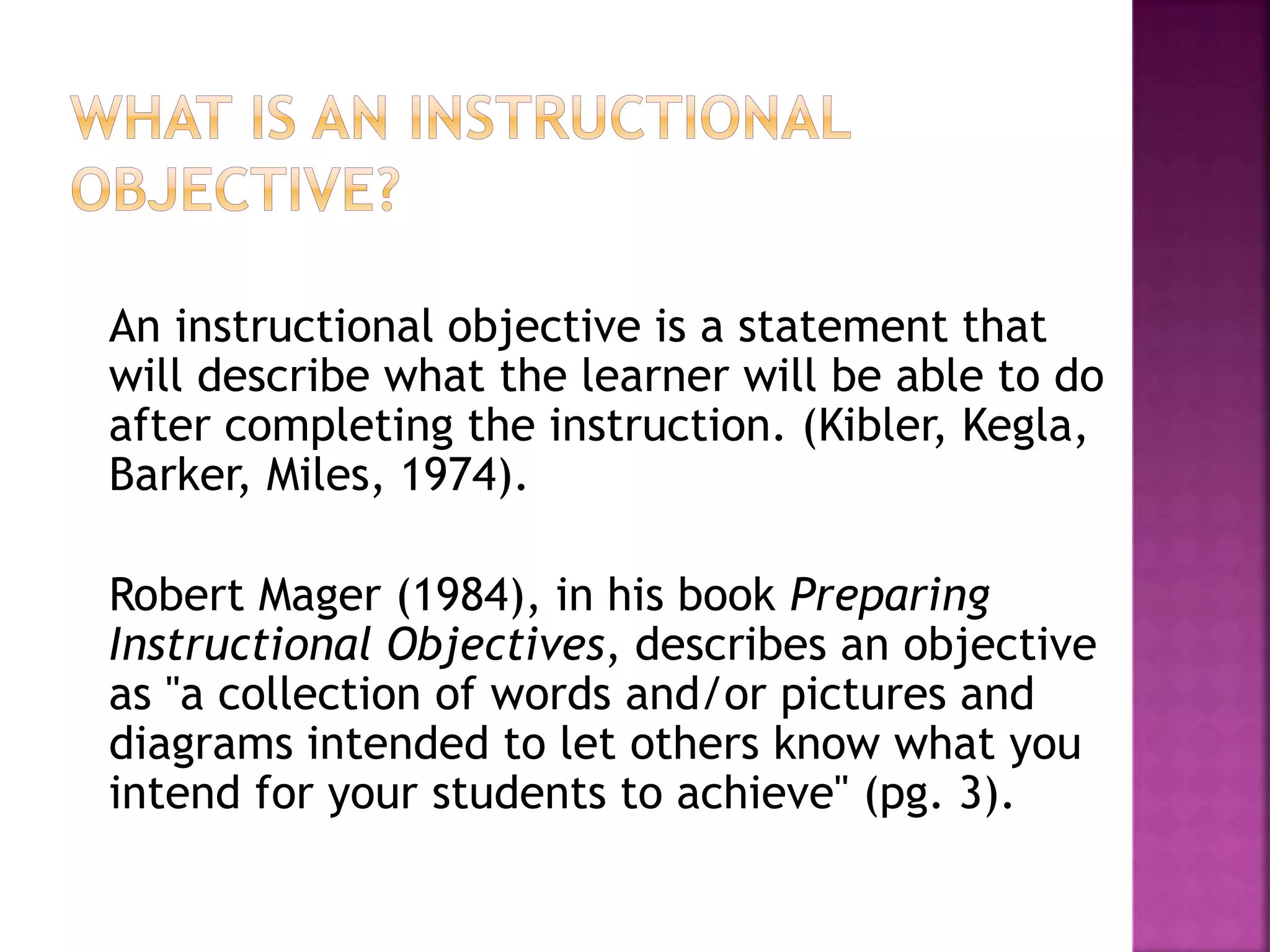An instructional objective describes what a learner will be able to do after instruction. Objectives should be SMART: specific, measurable, attainable, realistic, and time-bound. There are four components of an objective: the action verb, conditions, standard, and intended audience. Bloom's Taxonomy classifies educational objectives into three domains: cognitive, affective, and psychomotor. Within the cognitive domain are six categories of increasing complexity: remembering, understanding, applying, analyzing, evaluating, and creating.



















